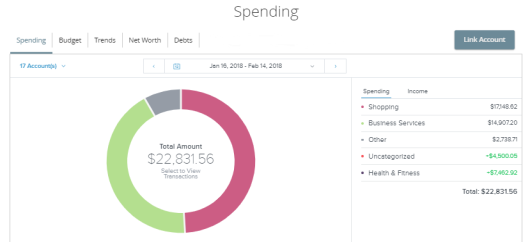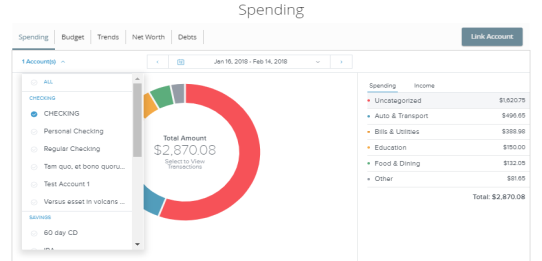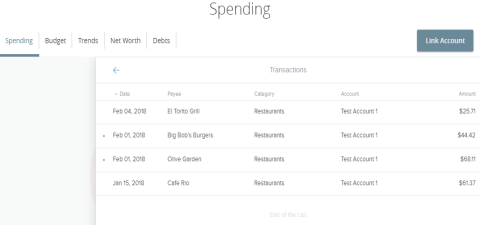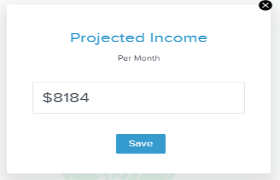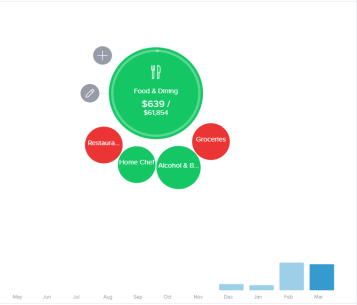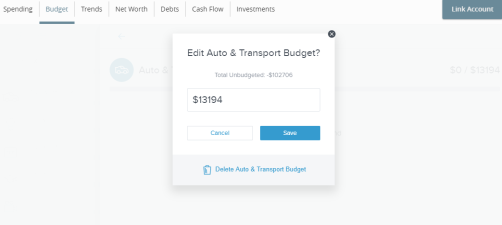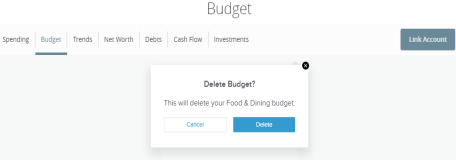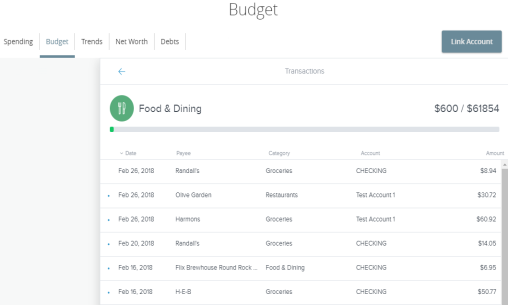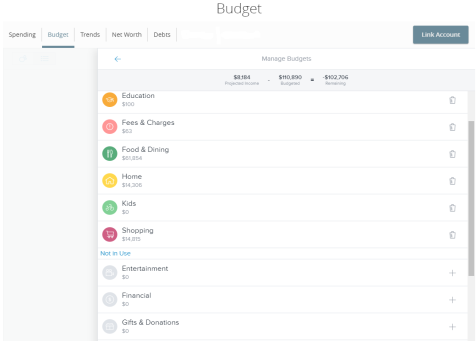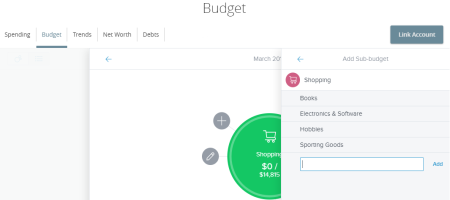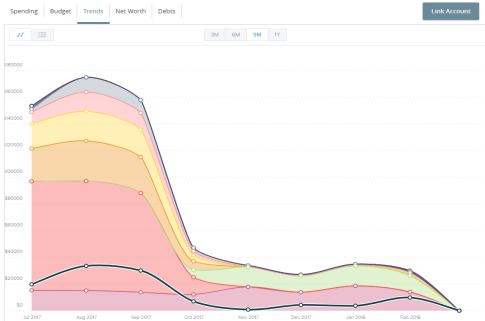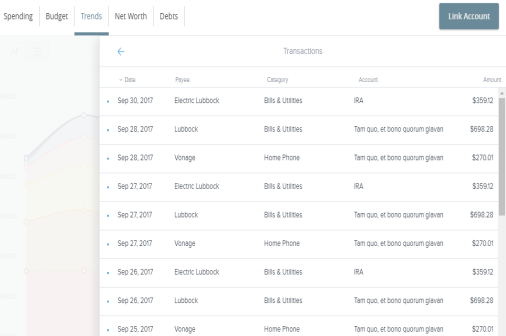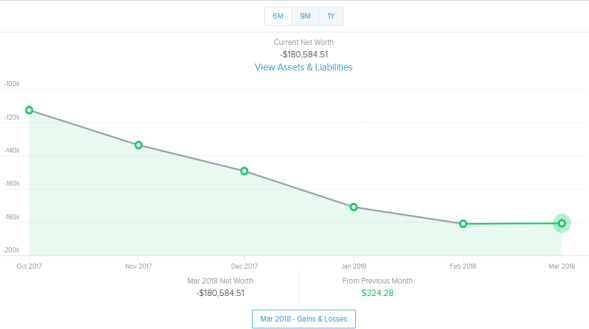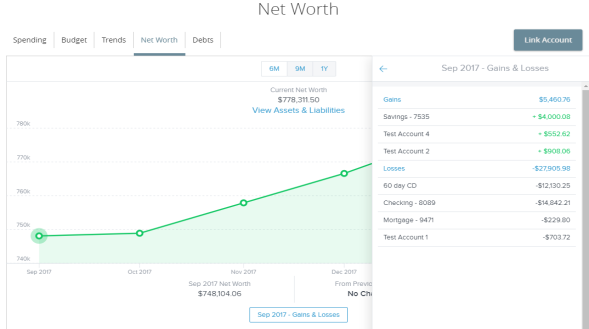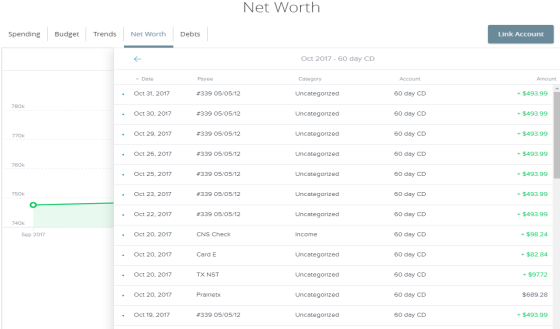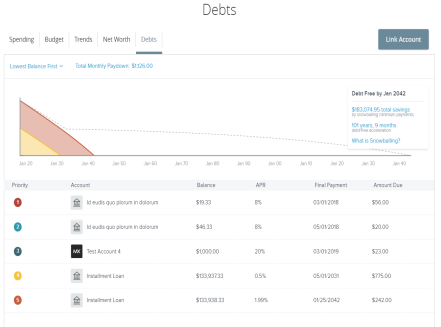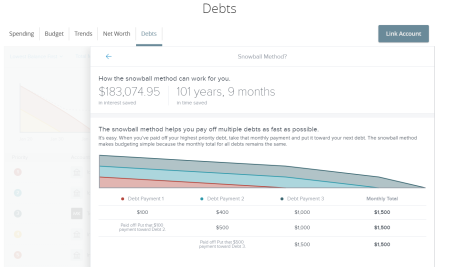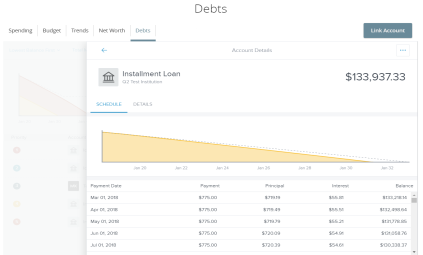The Budget widget allows you to set budgets for each spending category and track progress towards these categories each month. As each month progresses, this widget provides visual clues to show how close you may be to hitting the assigned thresholds. This widget is available in online and mobile banking, however, functionality is limited in mobile banking.
The first time you use the Budget widget, you have the option to Start from scratch or have personal financial management Auto-generate budgets based on your spending history.
If you choose Start from scratch, a menu of categories appears. Choose a category, then set the budget amount.
If you choose Auto-generate budgets, a list of budget categories and amounts based on your spending history appears. Scroll through the list and edit the amounts, if necessary. If you do not want a specific budget tracked, click the Delete icon ( ), then click Delete This Budget. Click Save Budgets to save all changes.
), then click Delete This Budget. Click Save Budgets to save all changes.
Note: To minimize manual rework, aggregate all of the accounts that could affect your budget, and review Categorizing transactions before using the auto-generate budget features.




